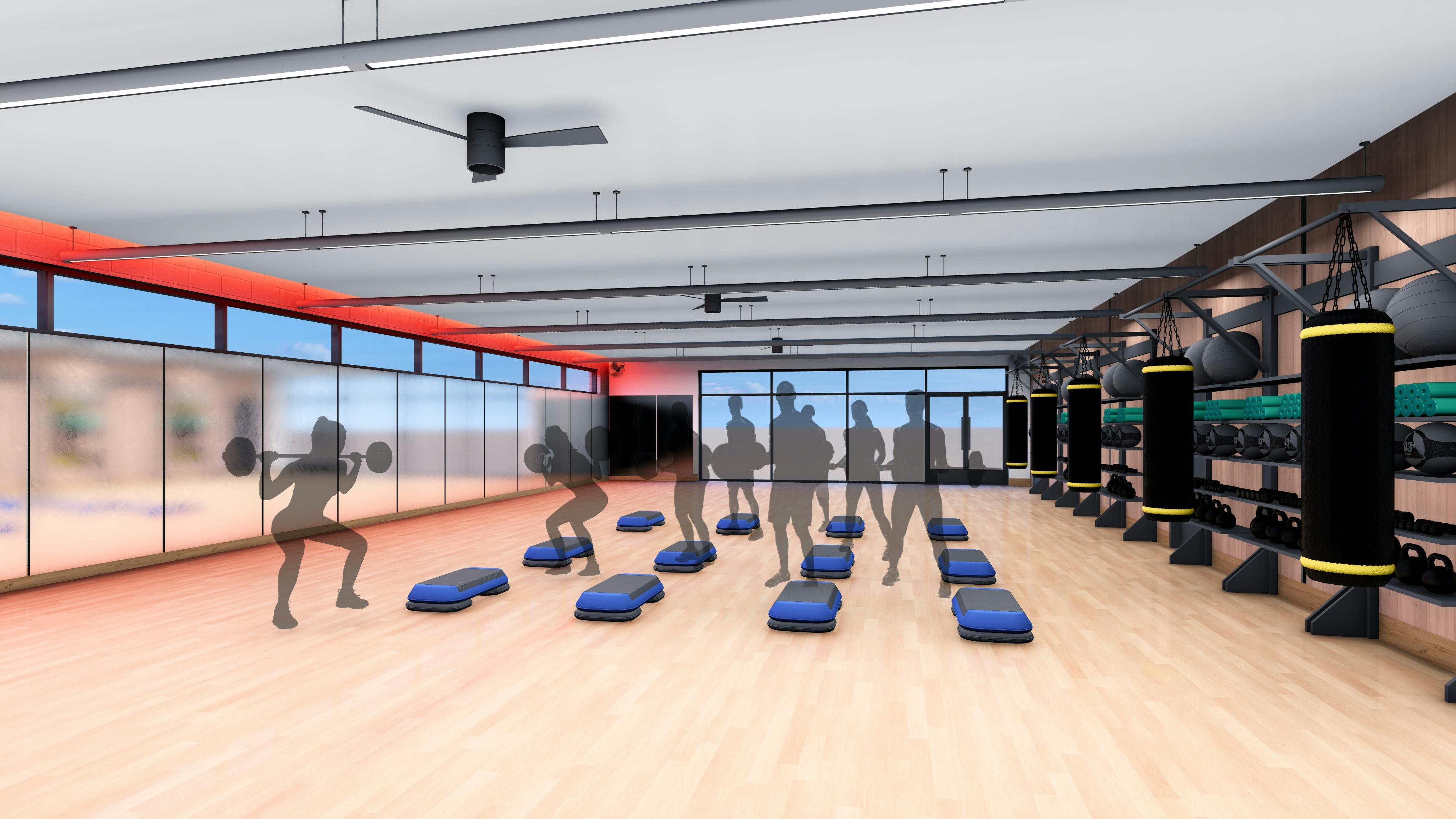Lafayette Capital Bond

11/26/25: Certification of Capital Bond Measure and Next Steps
The City of Lafayette extends its sincere appreciation to residents following the official certification of the November election results. With Ballot Measure 2C now approved, Lafayette voters have taken an important step toward modernizing three essential community facilities: the Bob L. Burger Recreation Center, the City Service Center, and the Civic Center. This will ensure Lafayette can continue investing in high-quality services, safe facilities, and long-term community infrastructure.
City Council will have a discussion item in early January 2026 to begin the initial phases of project development, including design work and pre-construction planning for these important facilities. The Recreation Center will be in the first phase of design, and community input will be a key component of that process. Engagement events, timelines, and project details will be shared as they are finalized.
Although voters approved the financing mechanism, bond issuance will not occur until later in 2026. Because of this timeline, residents will see no impact on their 2026 property tax collections.
The City is grateful for the community’s participation in this process and for the continued support of projects that invest in Lafayette’s future. Be sure to subscribe for ongoing information and updates on planning and design progress and next steps.

Some City buildings that provide essential services and functions are nearing the end of their useful life and experiencing operational and mechanical breakdowns.
At 35 years old, the pool at Bob L. Burger Recreation Center was closed last summer for six months due to failing and leaking pipes. This left the community without an indoor pool.
The water slide is no longer functional, and the lazy river pumps are broken beyond repair; there are no existing resources to address this.
The City’s parks and public works Service Center is 52 years old and isn’t large enough to accommodate fire engines and store large equipment, such as snowplows, which aren’t covered and suffer premature damage due to inclement weather.
City Hall is 40 years old and not optimized for energy efficiency, public safety, or public and ADA accessibility. These mechanical breakdowns are costly or impossible to repair due to outdated parts.

Only 0.46% of the City’s annual budget ($560,000) is allocated to facility maintenance projects for approximately 20 City-owned buildings.
Given the limited resources, those funds largely support routine maintenance and proactive maintenance when possible.


| Project Scope | Cost Estimate | Timeline |
|---|---|---|
| Expand by approximately 30% and renovate some portions, including the aquatics complex and community programming space. Watch the Recreation Center video | $34 million for design, construction, and other associated costs. | 1 year of design informed by community input and 18-24 months of construction. |
 While the overall structure of the recreation center remains usable, the 35-year-old aquatics complex has reached the end of its life. The current complex routinely experiences significant leaks and mechanical failures, resulting in closures. The proposed renovation would enhance services for residents by:
While the overall structure of the recreation center remains usable, the 35-year-old aquatics complex has reached the end of its life. The current complex routinely experiences significant leaks and mechanical failures, resulting in closures. The proposed renovation would enhance services for residents by:
- Replacing and expanding the entire aquatics area, installing a new water slide, a warm-water pool for therapeutic aquatics, an indoor whirlpool, and a larger lap pool.
- Additional space for individual workouts, fitness classes, older adult programming, preschool, after-school programming, and flexible community space.
 The current facility will continue to require costly stop-gap repairs to address mechanical failures and leaks, resulting in significant water loss. The facility’s outdated design requires disruptive work, such as tearing up the pool deck, to reach mechanical equipment and repair leaks. Improved equipment and modern design would not only address current deficiencies but also improve the City’s ability to repair leaks and equipment in the future.
The current facility will continue to require costly stop-gap repairs to address mechanical failures and leaks, resulting in significant water loss. The facility’s outdated design requires disruptive work, such as tearing up the pool deck, to reach mechanical equipment and repair leaks. Improved equipment and modern design would not only address current deficiencies but also improve the City’s ability to repair leaks and equipment in the future.
 The aquatics facility leaks water and is not energy efficient. The renovation and replacement would address these concerns and improve the building envelope, including walls, windows, doors, foundation, and insulation, to increase energy efficiency.
The aquatics facility leaks water and is not energy efficient. The renovation and replacement would address these concerns and improve the building envelope, including walls, windows, doors, foundation, and insulation, to increase energy efficiency.

| Project Scope | Cost Estimate | Timeline |
|---|---|---|
| Construct a new 33,000 square-foot building on vacant land owned by the City in Old Town to increase community space for residents, build capacity for future growth, and improve building efficiency. Watch the Civic Center video | $34 million for design, construction, and other associated costs. | 1 year of design informed by community input and 18-24 months of construction. |
 Click image to expand view
Click image to expand view  A new Civic Center on South Public Road would provide a more accessible and welcoming community space, better access to government resources and services, and a dedicated location for the Lafayette Municipal Court. It would also provide a southern anchor in Old Town, support a variety of Lafayette’s adopted plans to implement the community’s vision, and further activate the South Public Road corridor.
A new Civic Center on South Public Road would provide a more accessible and welcoming community space, better access to government resources and services, and a dedicated location for the Lafayette Municipal Court. It would also provide a southern anchor in Old Town, support a variety of Lafayette’s adopted plans to implement the community’s vision, and further activate the South Public Road corridor.
Municipal services have evolved since the construction of the current City Hall in 1985. Over the past 40 years, existing services have expanded, and new services have emerged based on community interests or regulatory requirements. Examples include communications to increase engagement, economic development to support economic diversification and resiliency, planning and building services to meet demand for development review and inspections, sustainability to implement community climate action goals, and professional engineering staff to improve the reliability and safety of Lafayette's infrastructure. A new Civic Center would provide:
A modernized building that would provide a safe, inclusive, and welcoming space for everyone.
The ability to help support revitalization efforts in Old Town, given its location along South Public Road.
Provide a dedicated location for the Lafayette Municipal Court, which currently shares space in the community meeting room with the Police Department, lessening space constraints and discomfort for some defendants.
Connecting City services and staff to businesses and residents, inviting civic participation in Lafayette decision-making.
 The current City Hall has inefficient systems and a multitude of deferred maintenance needs, including a fire suppression system, a redesign of the parking lot and building entrance to meet ADA requirements, and a roof replacement. Constructing a new facility would address these deficiencies and reduce overall operating costs through the use of modern equipment and an efficient building envelope.
The current City Hall has inefficient systems and a multitude of deferred maintenance needs, including a fire suppression system, a redesign of the parking lot and building entrance to meet ADA requirements, and a roof replacement. Constructing a new facility would address these deficiencies and reduce overall operating costs through the use of modern equipment and an efficient building envelope.
 A new Civic Center would improve energy efficiency by an estimated 27%. These energy efficiency measures come from improving the building envelope and installing energy-efficient equipment and lighting systems. The new Civic Center would also provide additional electric vehicle (EV) chargers for public use, thereby expanding Lafayette’s public EV charging network.
A new Civic Center would improve energy efficiency by an estimated 27%. These energy efficiency measures come from improving the building envelope and installing energy-efficient equipment and lighting systems. The new Civic Center would also provide additional electric vehicle (EV) chargers for public use, thereby expanding Lafayette’s public EV charging network.

| Project Scope | Cost Estimate | Timeline |
|---|---|---|
| Restructure and renovate the building's interior to improve efficiencies, enhance staff safety, and expand the building’s fleet maintenance bays and storage facilities. Watch the Service Center video | $6 million for design, construction, and other associated costs. | 6 months of design and 12 months of construction. |

 The services provided by the Service Center are crucial to maintaining a high quality of life, ensuring safety, and providing convenience for all Lafayette residents. The Service Center provides the space, equipment, and materials necessary for the maintenance of all utilities, streets, fleet, parks, and open space. Improvements to this facility would:
The services provided by the Service Center are crucial to maintaining a high quality of life, ensuring safety, and providing convenience for all Lafayette residents. The Service Center provides the space, equipment, and materials necessary for the maintenance of all utilities, streets, fleet, parks, and open space. Improvements to this facility would:
- Enlarge fleet bay areas to accommodate fire engines, snowplows, and large equipment to reduce City vehicle downtime for maintenance and repairs.
- Update the electrical system to provide electrification for electric vehicle (EV) chargers, diagnostic equipment, HVAC systems, lighting, and other technologies.
- Modernize basic workspaces and expand personnel areas such as showers, bathrooms, and cleaning stations for staff working in unsanitary conditions.
- Expand storage space to avoid outdoor storage and extend the lifespan of equipment stored at the site, including snowplows.
 Facility improvements would reduce building operating costs by improving energy efficiency, reduce premature damage to equipment currently stored outside, and increase operational efficiencies by co-locating similar maintenance functions currently located throughout the City.
Facility improvements would reduce building operating costs by improving energy efficiency, reduce premature damage to equipment currently stored outside, and increase operational efficiencies by co-locating similar maintenance functions currently located throughout the City.
 In its current condition, the Service Center lacks basic energy efficiency and environmental stewardship measures. Portions of the building do not have insulation, the aging building systems consistently fail, and the site suffers from poor drainage, resulting in building flooding and potential safety hazards and environmental concerns.
In its current condition, the Service Center lacks basic energy efficiency and environmental stewardship measures. Portions of the building do not have insulation, the aging building systems consistently fail, and the site suffers from poor drainage, resulting in building flooding and potential safety hazards and environmental concerns.
Additionally, the City is currently transitioning to an EV fleet but the transition is limited by electrical capacity at the Service Center, which is the central hub for fleet operations. The proposed renovations include right-sizing the electrical capacity serving the site to further support the transition to EVs.

City Council is considering a $74 million bond to address immediate needs.
Short-term fixes are costly and take funds that could be used for long-term, sustainable improvements.
Months of community engagement and input demonstrated the community’s desire for more modernized amenities and facilities.
A one-time $74 million investment would go a long way toward modernizing the City’s oldest buildings.
The debt would be paid back through a temporary increase in property taxes. The increased cost for the average-priced Lafayette home ($712,000) is estimated at $23/month (which is typically paid through a monthly mortgage payment) over the life of the bond (20 years).

Taking into account input and polling results from the past several months, City Council will finalize a ballot question in August and refer it to Lafayette voters for the election in November 2025.





















